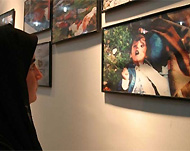Accounting for Anfal
No-one knows how many died in the Iraqi military’s Anfal campaign in the late 1980s.

After 50,000 confirmed dead, the figures are uncertain.
Kurdish sources and human rights groups – working on the number of villages destroyed – claim 180,000 men, women and children perished between 1986 and 1989.
The outside world only woke up to the horror of Operation Anfal when grisly TV pictures of gassed victims at Halabjah emerged.
Now, 20 years later, Saddam and six co-defendants are standing trial for genocide carried out during the campaign.
The case is expected to last until the end of the year, unless it is overtaken by the results from Saddam’s first trial over the killing of 148 villagers from Dujail in 1982.
The verdict in that case is due on October 16.
Deadly mixture
|
ANFAL ACCUSED Saddam Hussein: Former Iraqi president, alleged to have ordered forces to lay waste to Kurdish lands to repress separatist sentiment. Ali Hassan al-Majid (aka “Chemical Ali”): Was head of Iraq’s northern military command and is Saddam’s paternal cousin. Saber al-Duri: Director of military intelligence, accused of planning Anfal campaign. Taher al-Ani: A key member of Saddam’s regime and former governor of Mosul. Sultan Hashem al-Tai: Field commander of “Task Force Anfal”. Hussein Rashid al-Tikriti: Former deputy chief of operations for armed forces, was key player in the Anfal events. Farhan al-Juburi: Former head head of eastern bureau of Saddam’s feared military intelligence apparatus. |
Anfal, meaning “spoils of war”, takes its name from Surat Al-Anfal in the Qu’ran. Used as used as a code name by the Baathist regime it was really an extension of the Iran–Iraq war.
Perhaps the most infamous and horrific attack of the Anfal campaign took place at the town of Halabjah in 1988.
Beginning in the morning of March 16 and continuing all night, the Iraqi military rained down volley after volley of bombs filled with a deadly mixture of mustard gas and nerve agents.
Immediate effects of the chemicals included blindness, vomiting, blisters, convulsions, and asphyxiation.
Approximately 5,000 women, men, and children died within days of the attacks. For those who didn’t die, long-term effects included permanent blindness, cancer, and birth defects.
Of an estimated 10,000 who survived, disfigurement and sicknesses from the chemical weapons are a daily fact of life.
I recently visited the Kurdish village of Barzan north of Irbil where local women talked of their awful memories of Anfal and specifically the day Saddam’s troops came.
It was just before dawn, they said. Men and boys were dragged screaming from their homes.
Concentration camps
 |
|
The wounds of Halabjah continue |
When the round-up was done in Barzan and other nearby villages, 12,000 captured victims were trucked to concentration camps.
They were never seen alive again.
We now know some prisoners were lined up and shot, their bodies thrown into mass graves.
Others were made to lie down, and, after they were killed, a bulldozer pushed earth and sand on top.
Still more were made to stand on the lip of mass graves before they were shot in the back.
But Anfal was more than the awfulness of Halabjah and the purging of villages like Barzan.
Anfal also included the systematic destruction of hundreds of communities and ethnic cleansing on a vast scale.
 |
|
A poster in the north of Iraq |
After the Kurds were driven out of their homes, Saddam shifted poor families from Iraq’s southern regions to cities, like Kirkuk, with the lure of work and cheap housing.
Kurds have always referred to the Anfal campaign as genocide.
In December 2005 a court in The Hague ruled the killing of thousands of Kurds was indeed genocide, defined in the 1948 Geneva Convention as: “acts committed with the intent to destroy, in whole or in part, a national ethnic, racial or religious group.”
I asked the women I met in Barzan if they would be watching Saddam’s finally facing trial.
They told me they wouldn’t because it would re-open old wounds.
They just said they hoped Saddam would be hanged and go to hell.